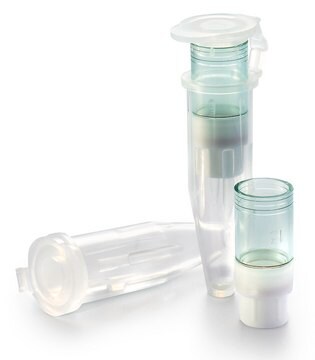28-2940
Sodium hydroxide
JIS special grade, ≥96.0%
Synonym(s):
‘Caustic soda’
Sign Into View Organizational & Contract Pricing
All Photos(1)
About This Item
Linear Formula:
NaOH
CAS Number:
Molecular Weight:
40.00
EC Number:
MDL number:
UNSPSC Code:
12352106
PubChem Substance ID:
Recommended Products
grade
JIS special grade
vapor density
>1 (vs air)
vapor pressure
<18 mmHg ( 20 °C)
3 mmHg ( 37 °C)
Assay
≥96.0%
form
pellets
availability
available only in Japan
mp
318 °C (lit.)
solubility
water: ~1260 g/L at 20 °C
density
2.13 g/cm3
SMILES string
[OH-].[Na+]
InChI
1S/Na.H2O/h;1H2/q+1;/p-1
InChI key
HEMHJVSKTPXQMS-UHFFFAOYSA-M
Looking for similar products? Visit Product Comparison Guide
Related Categories
Application
- Facile Synthesis of Carbon Dots from Amido Black 10b for Sensing in Real Samples.: This study presents a simple synthesis method for carbon dots using Amido Black 10b, with applications in sensing. The researchers demonstrated the utility of these carbon dots in real sample analysis, highlighting their potential in environmental monitoring and biomedical applications. (Li et al., 2022).
- Multiple chemical modifications and Cd(2+) adsorption characteristics of sludge-based activated carbon.: The research explores various chemical modifications of sludge-based activated carbon and its effectiveness in adsorbing cadmium ions (Cd(2+)). Sodium hydroxide was used in the modification process, enhancing the material′s adsorption capabilities. This study is relevant for environmental cleanup and water treatment applications. (Chen et al., 2022).
- Characterization of ligno-cellulosic fiber extracted from Atriplex halimus L. plant.: This study characterizes ligno-cellulosic fibers extracted from Atriplex halimus using sodium hydroxide. The results show the potential of these fibers in biocomposites, contributing to sustainable material development. (Belouadah et al., 2021).
- Monitoring the extraction of copper from chicken dung leachate using an aluminium electrode as an indicator.: The research focuses on the extraction of copper from chicken dung leachate, using an aluminium electrode for monitoring. Sodium hydroxide is employed in the leachate treatment process, showcasing its role in resource recovery from agricultural waste. (Kugeria et al., 2019).
- Coconut coir pith lignin: A physicochemical and thermal characterization.: This paper discusses the characterization of lignin from coconut coir pith, using sodium hydroxide in the extraction process. The findings are significant for the development of bio-based materials and the utilization of agricultural residues. (Panamgama et al., 2018).
Signal Word
Danger
Hazard Statements
Precautionary Statements
Hazard Classifications
Eye Dam. 1 - Met. Corr. 1 - Skin Corr. 1A
Storage Class Code
8A - Combustible corrosive hazardous materials
WGK
WGK 1
Flash Point(F)
Not applicable
Flash Point(C)
Not applicable
Choose from one of the most recent versions:
Already Own This Product?
Find documentation for the products that you have recently purchased in the Document Library.
Konstantinos A Polyzos et al.
Cardiovascular research, 106(2), 295-302 (2015-03-10)
Atherosclerosis is a chronic inflammatory disease that is initiated by the retention and accumulation of low-density lipoprotein in the artery, leading to maladaptive response of cells from the immune system and vessel wall. Strong evidence implicates indoleamine 2,3-dioxygenase (IDO), the
Virginie Mariot et al.
Annals of neurology, 78(3), 387-400 (2015-05-29)
Facioscapulohumeral muscular dystrophy (FSHD) is linked to either contraction of D4Z4 repeats on chromosome 4 or to mutations in the SMCHD1 gene, both of which result in the aberrant expression of the transcription factor DUX4. However, it is still difficult
C Berger et al.
Human reproduction (Oxford, England), 30(4), 800-811 (2015-03-06)
Does ulipristal acetate (UPA) used for emergency contraception (EC) interfere with the human embryo implantation process? UPA, at the dosage used for EC, does not affect human embryo implantation process, in vitro. A single pre-ovulatory dose of UPA (30 mg)
Richard J Travers et al.
Blood, 124(22), 3183-3190 (2014-09-10)
Polyphosphate (polyP) is secreted by activated platelets and has been shown to contribute to thrombosis, suggesting that it could be a novel antithrombotic target. Previously reported polyP inhibitors based on polycationic substances, such as polyethylenimine, polyamidoamine dendrimers, and polymyxin B
Jesper Hjortnaes et al.
Advanced healthcare materials, 4(1), 121-130 (2014-06-25)
Three dimensional (3D) hydrogel platforms are powerful tools, providing controllable, physiologically relevant microenvironments that could aid in understanding how various environmental factors direct valvular interstitial cell (VIC) phenotype. Continuous activation of VICs and their transformation from quiescent fibroblast to activated
Our team of scientists has experience in all areas of research including Life Science, Material Science, Chemical Synthesis, Chromatography, Analytical and many others.
Contact Technical Service

